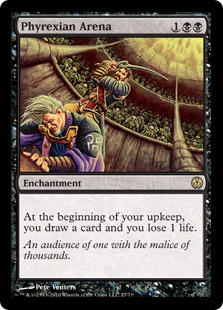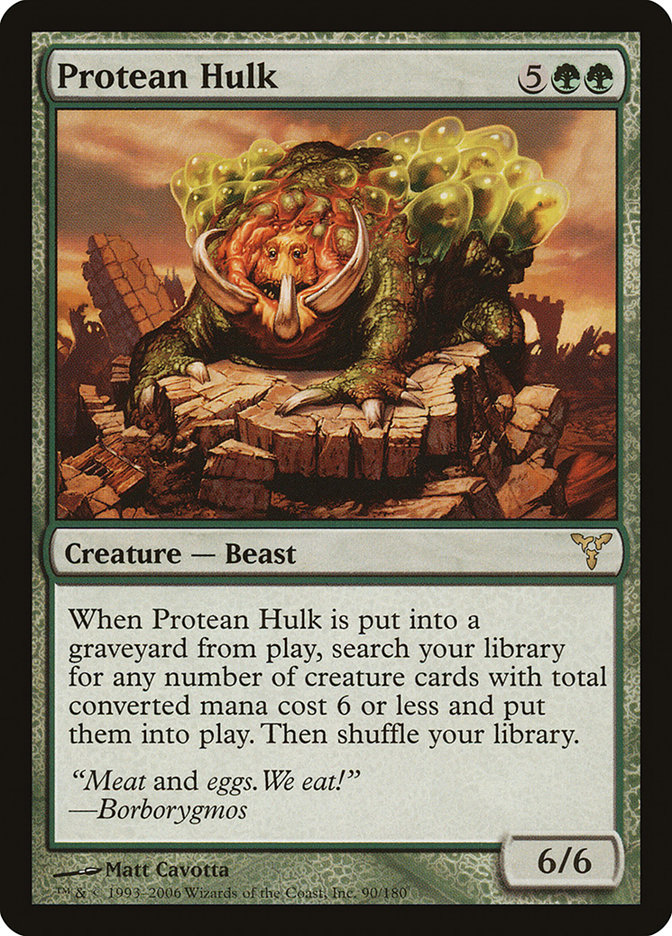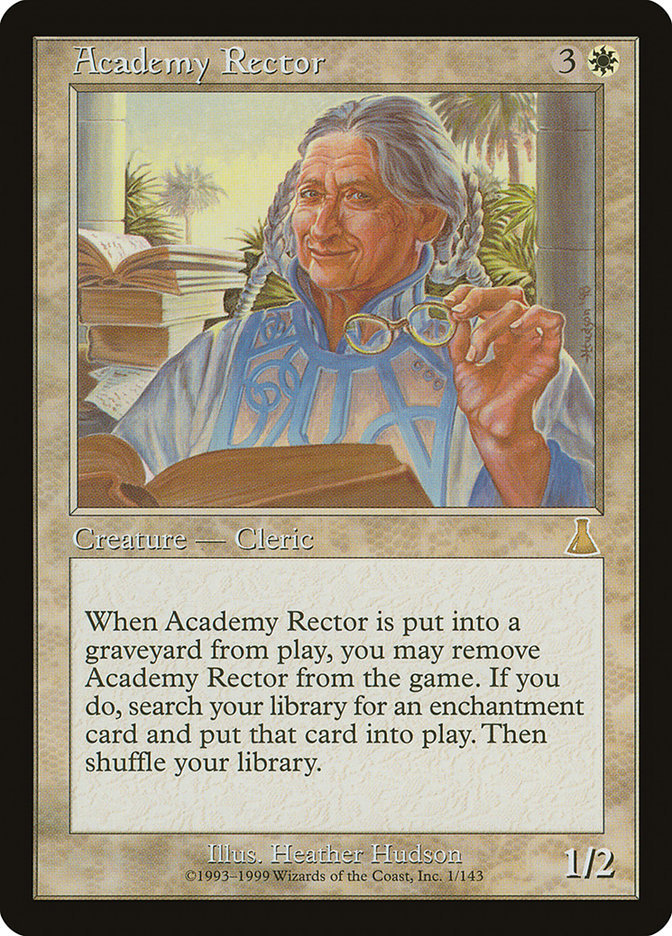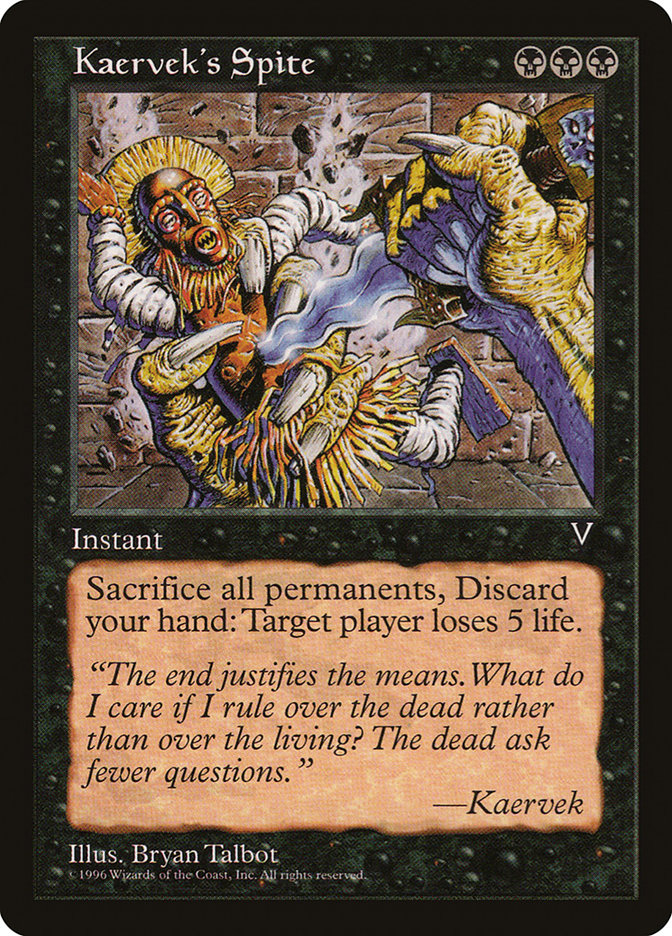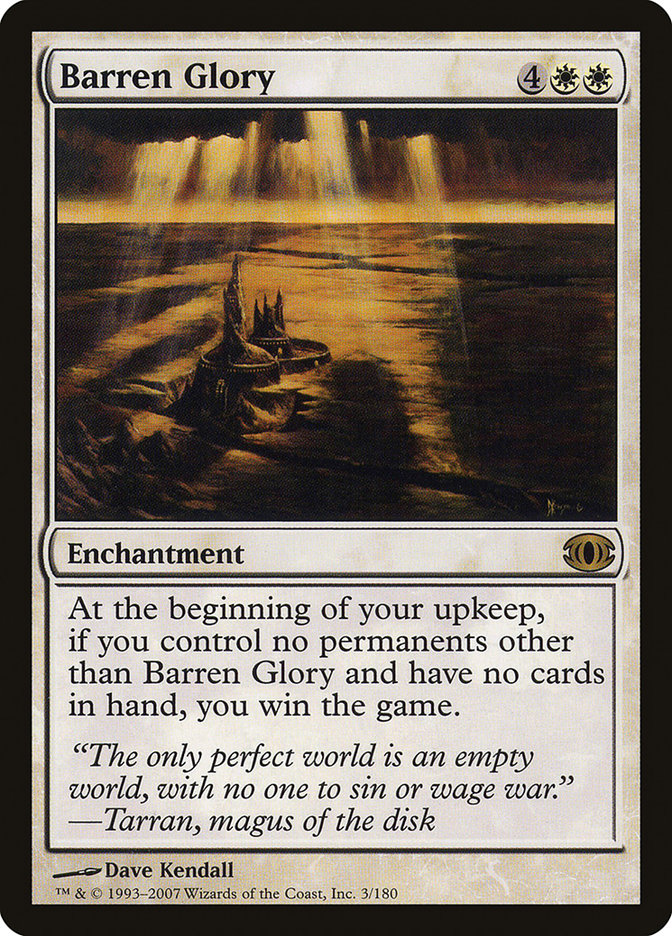GP Memphis was a ton of fun and a great chance for me to test U/B Control in a competitive field. I faced a few great mages and was victorious in a field
filled with Abzan variants, including Patrick Chapin playing his take on the archetype. The wins were redundant, as were the losses: I beat R/W Aggro,
various takes on Abzan, and the control mirror, while losing to the two out of three matches against random Temur Midrange. I was also slain by a G/R
opponent that I had the misfortune of being paired against. I was doomed by a turn 3 Xenagos, the Reveler two of the three games, and heavy with
frustration due to not having a Hero’s Downfall in hand and being on the draw both times. The wins were much easier with U/B Control in comparison to Esper
Control, with zero losses due to the colors produced by my lands. I loved Radiant Fountain, but in the current version that I am championing, I think
adding additional copies would jeopardize the consistency of the manabase.
I drew in the last round of the GP, deciding that a guarantee of money was better than a shot at top 32 or nothing at all, finishing in 52nd place. I can
never top 8 these things, but I joke with BBD and friends about having a guaranteed money slot regardless of the format. The decks that I suggest and pilot
are often weak to a random tier 2/3 deck, Temur being the case here, and I happen to always find those opponents in the room no matter what. Friends that
played in the event told me they didn’t see a Temur player all weekend, but facing the bad matchup three times is something that shouldn’t happen often.
There isn’t a magical sideboard card that can help turn the tides of the matchup, as the creatures are just too ranged in toughness, starting with a 4/1 or
2/2, and then graduating to 4/4s or bigger for the remainder of the game. This makes sideboarding extremely difficult, and cards like Drown in Sorrow and
Bile Blight can be very unimpressive. I switched the Perilous Vault to a third Nullify in the sideboard, which is one of the best cards against them, but
it’s still rough. That is the only change I’m making to the deck, so if you’d like to join the U/B team, you can read how to do that right here.
So, the article today is centered around the inspired madness I face each and every time I’m on a long trip. This includes car rides, trains, and flights
to any Magic trip that I find myself on. My masterpieces have mostly come from this solitary “thought brewing,” born from a combination of boredom and the
dream of victory. On my way to U.S. Nationals in 2008, I was down on my Teferi, Mage of Zhalfir control deck. This eight-hour car ride produced this wild
Temur Control deck that included a wide range of counterspells, big creatures, and hate for the Faeries matchup. The switch was irrational, the deck was
untested, but I knew it was going to be a winner. I top 8’d that tournament, narrowly losing to Sam Black in the top 8, and it was all due to a road trip
brew. I did the same thing on the way to and back from GP Memphis, and I wanted to share my extravagant creations with you all. Before I show the six (yes,
six) decks that I’ve brewed in Standard, Modern, and Legacy, I want to preface this with the fact that they are indeed untested and wild. One or two of
these may be able to win a small tournament, a few of them can entertain you at FNM, or maybe one of these needs a bit more tweaking to break its
respective format. I’ll let you all decide as we step away from the strategy stage for this week’s edition of Soorani literature.
Planeswalkers (7)
Lands (25)
Spells (28)
- 3 Phyrexian Arena
- 4 Wrench Mind
- 4 Smallpox
- 4 Damnation
- 4 Thoughtseize
- 1 Path to Exile
- 4 Dismember
- 4 Lingering Souls
Sideboard

This is the deck I’m most excited about crafting. I was joking with Harry Corvese at the site about sleeving up some Wrench Minds, and he actually helped
me think of a few goodies to go with it. This version of B/W takes full advantage of a format dominated by the earlygame, using Thoughtseize into Wrench
Mind and completing the devastation with a Liliana of the Veil. There are few decks that can bounce back from an array of hand disruption like that. With
the delve draw power gone from Modern, I suspect there are a lot ways to take full advantage of the situation. Decks that run a lot of discard are
susceptible to dead draws later in the game, which is why I’ve decided to pack this deck with planeswalkers that help ease the pain of topdecking suspect
spells.
Phyrexian Arena is one of my all-time favorite cards, and now I found an excuse to play it. The junky lategame drawing of discard spells is neutralized by
the heavy card advantage that Phyrexian Arena provides. The problem that arises from all of these effects is the heavy toll on the life total. That is
where the Vault of the Archangel and the Sorin, Solemn Visitors come in. I don’t know which Sorin is better just yet unfortunately. Sorin, Solemn Visitor
teaming up with Lingering Souls is ridiculous, but a Sorin, Lord of Innistrad is far better on the empty board that this deck often creates. Since I don’t
like running a split of the planeswalking fellow, I’ve decided to assist the Lingering Souls plan and run the Standard legal version. The tough matchups
are evened out in the sideboard, with hate for Mono-Red and Affinity. A deck that deals this much damage to itself and banks on the power of discard will
often have a hard time defeating aggro, but the maindeck Damnations should help you steal a game 1 here and there. My friend peeked at this deck and is
using it at the Baltimore Open this weekend, so I’ll let you all know via Twitter how he performs.
Creatures (10)
Lands (21)
Spells (29)
- 4 Serum Visions
- 4 Footsteps of the Goryo
- 4 Ideas Unbound
- 4 Thoughtseize
- 1 Inquisition of Kozilek
- 4 Gitaxian Probe
- 4 Faithless Looting
- 4 Izzet Charm
Sideboard

This is the first Modern deck I piloted a while ago, but I’ve heavily altered it with the many new sets that have arrived since. I didn’t even have access
to Faithless Looting at the Pro Tour, so the deck has clearly gained some advantage from a wider pool of cards. Cards like Deathrite Shaman came into
Modern afterward as well, making this deck unplayable for some time but now possible with DRS being banned.
I love combo decks and brewing them. I just always flounder after losing to a piece of hate over and over in testing. If there was a time where the
graveyard hate is at an all-time low, this would be it. There are delve decks that abuse the graveyard by placing humungous creatures in play on turn 2,
but graveyard hate isn’t necessary to defeat them. Path to Exile and Dismember do the job for those strategies, so I don’t see a spike in hate for the
upcoming Open in Baltimore.
This Hulk Combo deck works like the one of old, placing Protean Hulk in the graveyard only to be brought back until the end of turn. It is then sacrificed,
gets a Viscera Seer and a Body Double, copies Protean Hulk, sacks to Viscera Seer, repeats the process (to safeguard against a removal spell on your
Viscera Seer), then sacks again to get Reveillark and Death Cultist for an infinite life drain. This combo goes off on turn 3 if the pieces are obtained
through the massive card draw and dig package in the deck. Besides Faithless Looting, Izzet Charm is another gem that was added from a newer set. The card
is fantastic in this deck with the ability to remove a troublesome threat, dig and pitch cards into the graveyard, and counter anything of relevance that
may stop us from achieving victory. The only weak point to the deckbuilding process here is the sideboard. I don’t want to lie to you all and parade around
as a combo expert, so the sideboard is suggested but definitely needs assistance. I toyed with the idea of running Tasigur, the Golden Fang/Gurmag Angler
to move into once hate arrives, but I’m still unsure. I would personally play a transformational sideboard, but I posted a more standard version for you
all to take a look at.
Creatures (3)
Planeswalkers (1)
Lands (24)
Spells (32)

This is my true first love in competitive Magic. I was undefeated in the Extended format at Worlds in 2006 with a U/W Tron list and knew it would be quite
powerful for the remainder of its tenure in older formats. With the best decks running around packing a full set of Fulminator Mage and Tectonic Edge, it
does get a bit risky to sleeve up the twelve colorless land package, but for you adventurous folks out there, I have a powerful option for you. I don’t
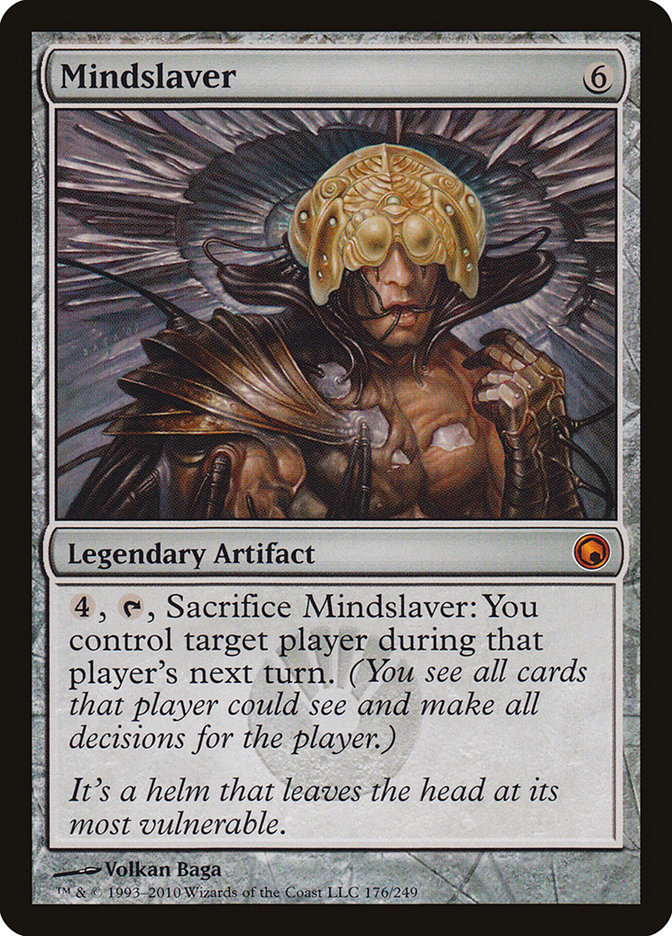
like Emrakul, the Aeons Torn in the maindeck for obvious reasons involving cost and ineffectiveness sitting in your hand. I believe that Wurmcoil Engine
has never been better and Iona, Shield of Emeria is very powerful as well. Karn Liberated is the last line of defense if the rest of your forces have been
dispatched game 1, but that shouldn’t be the case often.
The sideboard has the less effective Elesh Norn, Grand Cenobite as well as the Mindslaver package. Mindslaver is similar to Emrakul, the Aeons Torn because
of its eventuality. A majority of the time, Mindslaver simply activated once will be enough to totally destroy an opponent, but the assurance of Academy
Ruins makes you feel safer. Since land destruction is real, you’ll have to take that infinite loop victory slower, using Mindslaver later on and then
tutoring/playing your legendary land. The mana difference between the Eldrazi and artifact options is huge, which helped me make the decision to go a bit
cheaper on the path to victory. The only reason why I don’t include it in the main is because of the existence of blitz decks that already pose a threat.
The sideboard has the other tools necessary to stave off aggro opponents and help optimize the Tron machine for the midrange matchup, which is pretty good
already.
Creatures (18)
- 4 Gray Merchant of Asphodel
- 2 Erebos, God of the Dead
- 4 Satyr Wayfinder
- 4 Rakshasa Deathdealer
- 4 Siege Rhino
Lands (24)
Spells (18)
Sideboard

This is a type of deck that you wouldn’t typically expect from me, but crazy things happen when I’m left to my magician thoughts. Palace Siege is such a
sweet card, and there isn’t a creature that abuses it like Gray Merchant of Asphodel. Clearly I’m late on the black devotion strategy, but I think it would
be pretty fun in the current Standard. There aren’t any creatures like Nightveil Specter to help break the format, but the existence of Siege Rhino is good
enough for me to try. Both modes on Palace Siege are super relevant in this deck, with the graveyard recursion being the most lucrative. Whip of Erebos is
another card that can continue to haunt opponents with endless draining at the hands of your eight haymaker creatures. The earlygame spells are used to
slow opponents down, apply pressure, and answer threats that make it difficult to assemble the combo. I wish there was a better creature than Agent of the
Fates or Master of the Feast that had double black in the cost, but it’s just not the time for heavy devotion creatures. Both those creatures can do some
damage, but more often than not they are pretty subpar. That is the reason I decided to go with Rakshasa Deathdealer, to see if it can mimic the additional
drain by dealing a little early damage through combat. The deck is already pretty stacked against midrange and control, so the sideboard is there to help
with troublesome enchantments/artifacts and the aggro matchup.
Creatures (4)
Lands (20)
Spells (36)
- 4 Brainstorm
- 2 Duress
- 4 Force of Will
- 4 Dark Ritual
- 4 Cabal Therapy
- 1 Form of the Dragon
- 4 Kaervek's Spite
- 1 Barren Glory
- 4 Ponder
- 4 Thoughtseize
- 4 Gitaxian Probe
Sideboard

I had this one in brewing for a while, and it’s time to unleash it upon the world! Again, I’d like to apologize for my lack of sideboard prowess in the
realm of combo, but I hope that you all will help me in that department. This is one of those decks that look very silly, but is a two-card combo just like
the others out there.
It wins with resolving Academy Rector (usually with a Dark Ritual) and then casting Kaervek’s Spite, sacrificing all permanents and discarding your hand
with the Academy Rector trigger on the stack. Once the Academy Rector’s trigger resolves, you fetch up Barren Glory and win automatically during your
upkeep. The deck is dangerously weak to countermagic, but that is the purpose of running ten hand disruption spells and four Force of Wills. You will rip
an opponent’s hand apart, see it with Gitaxian Probe, or use Force of Will to push the combo through. The Academy Rector is the one card that must resolve,
because Kaervek’s Spite does the task without need of resolution. Sacrificing all permanents and discarding the hand are all part of the cost of spiting an
opponent, so cast with confidence.
The random Form of the Dragon is for the aggro/decks that can’t deal with it. It is the easiest way to steal a victory by using a harmless Cabal Therapy
turn 1 and following up with a Dark Ritual, Academy Rector, and Flashback for victory. This is for matchups that can’t Force of Will or do not have one
handy from a helpful Gitaxian Probe. The Moat ability added with a powerful clock can put tremendous pressure on an opponent and is easily defended with
Force of Will and hand disruption.
I’m not sure it’s ready for winning a Legacy Open yet, but it’s definitely one of my wackier, sweeter ideas that I haven’t gotten around to sleeving up.
The cost is relatively low, barring the lands, in terms of Legacy deck costs as well. The sideboard contains a couple answers for Show and Tell with
Karakas, grindy matchups with Dig Through Time, enemy discard with Leyline of Sanctity, Surgical Extraction for graveyard threats in conjunction with
powerful hand disruption, and the answer all in Echoing Truth.
Creatures (2)
Planeswalkers (6)
Lands (25)
Spells (27)

This incarnation of Esper Control is a little different than those of the past. It is basically a U/B Control deck with a splash of white, giving us
control magicians the Lingering Souls package that makes the proactive strategy so appealing. The use of Damnation over Supreme Verdict has a few risks
involved, but the need for WW being delayed is extremely useful. Gideon Jura is still the best control card in Modern today, but he usually enters the
battlefield later in the game to start dominating. This deck mirrors my U/W Control deck that I have been piloting for quite some time, using Thoughtseize
instead of Condemn/Spell Snare, Lingering Souls instead of Vendilion Clique, Sorin, Lord of Innistrad instead of Elspeth, Knight Errant, and Creeping Tar
Pit instead of Celestial Colonnade.
There are pros and cons when deciding between the two or three color strategy, and either is a viable choice. This deck has a proactive element that U/W
Control simply doesn’t have, which can be accredited to Liliana of the Veil and Lingering Souls. The sideboard is also very similar, only using Timely
Reinforcements due to the difficulty to cast Kor Firewalker on turn 2 consistently. I still can’t decide between Sorins, but I think that the Lord of
Innistrad is better in this tap out control deck that doesn’t require lifegain immediately. Also I’m running three Lingering Souls instead of four, which
has swayed me into the older of the two planeswalkers. The rest of the sideboard is pretty easy to use, adding good cards for dead cards across the
spectrum.
I think that this will be the deck of my future in Modern, however, I’m going to be using the old trusty U/W Control that led me to a qualification last
year (GP Richmond) for the Open Series in Baltimore this weekend. Hopefully I see you there!

